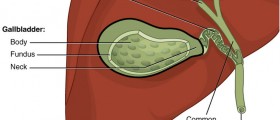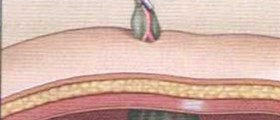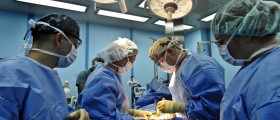
Gallbladder disease affects about twelve percent of adults. In most cases, the gallbladder must be removed as part of treatment for the condition. This operation is known as a cholecystectomy. The two main causes of gallbladder disease are obesity and rapid weight loss.
Causes
A major cause of gallbladder disease is obesity. As a result of this fact, many obese patients will have their gallbladder removed prior to anti-obesity treatment. Other patients might experience gallbladder disease as a result of rapid weight loss. Someone who has undergone weight-loss surgery has up to a 30% chance of developing gallbladder disease within a year of surgery. This has lead to many proposals for mandatory removal of the gallbladder prior to such surgeries. However, there are arguments against this, which state the as many as 75% of obese patients may have undergone an unnecessary removal of the gallbladder.
Symptoms
The presence of gallstones is a good indication of the development of gallbladder disease. However, gallstones do not necessarily point to the necessity for surgery. In fact, as much as 2 out of 3 gallstones patients do not require surgical attention. Generally, the most commonly seen symptom of this condition is periodic pain. This pain occurs when the gallstones block the gallbladder outlet. Known as a gallbladder attack, this pain will normally manifest in the pit of the stomach. Often, the pain might shift to the back. Pain might also be followed by nausea or vomiting.
Attacks such as this generally cease within a few hours. However, an infection might be indicated in the case that the pain subsides slightly before resuming once again below the right ribcage. This infection is called cholecystitis.
Symptoms developing will indicate that the gallbladder disease has progressed. Thus, surgery might be required.
Treatment and its risks
Cholecystitis can be treated by early removal of the gallbladder. A cholecystectomy is a major surgical procedure and should not be taken lightly. When one undergoes such a surgery, one is put at risk of injury occurring in the main bile duct. However, this complication occurs in, at the very most, 2 percent of patients. If a cholecystectomy is combined with a laparoscopic bariatric operation, the risk of complication will be increased. The latter procedure is quite complex, and when combined with the postoperative difficulties of the former, can be quite wearing on the patient. Most cholecystectomies are now performed laparoscopically, thus offsetting some of the inherent risk.
















Your thoughts on this
Loading...